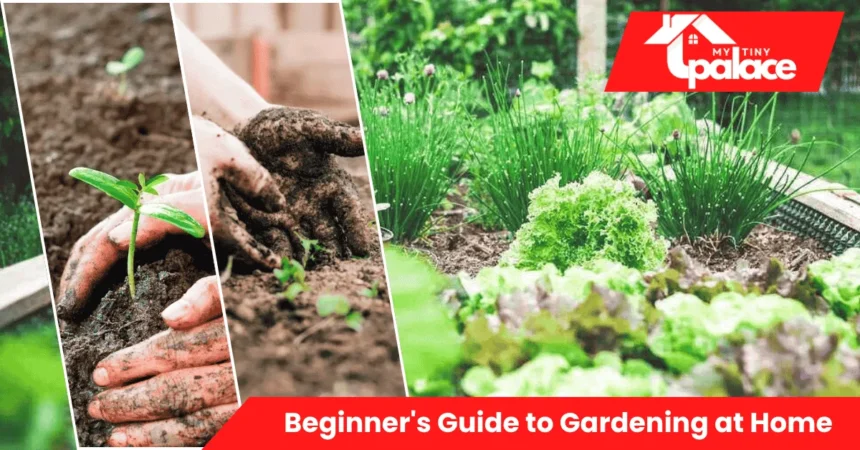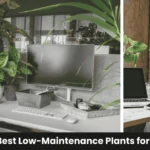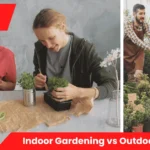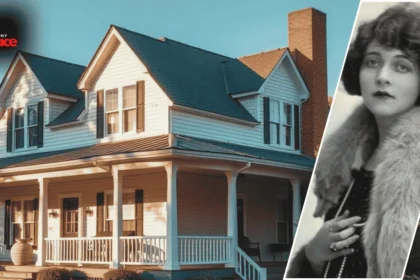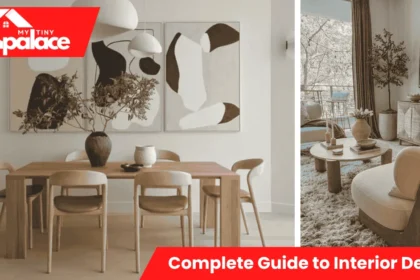Fresh basil on your windowsill. Crisp lettuce from a balcony planter. Tomatoes are ripening in a pot by your door. You don’t need a backyard or years of experience to grow your own food and flowers. With a few containers, some potting mix, and a handful of beginner-friendly plants, you can start a home garden this weekend. This guide walks you through three simple starter plans, a quick cost breakdown, and practical fixes for common problems. Whether you rent an apartment or own a home, you’ll find a low-commitment way to grow something green.
- Beginner’s Guide to Gardening at Home
- Why Home Gardening Matters for Beginners
- Types of Home Gardens (Pick What Fits You)
- How to Choose Plants & Plan Your First Garden
- Step-by-Step: Start Your First Garden
- Costs, Time, Tools — Include a Small Table
- Common Problems and Simple Fixes
- Pros & Cons / Who Should Consider It
- Quick Summary + CTA (What to Do Next)
Beginner’s Guide to Gardening at Home
Home gardening for beginners means growing plants in whatever space you have—containers on a balcony, raised beds in a small yard, or herbs on a sunny windowsill. You’re not building a farm. You’re creating a small setup that fits your schedule and gives you fresh herbs, a few vegetables, or flowers that brighten your space. This guide is for absolute beginners who want clear steps, realistic expectations, and a plan they can follow without buying expensive tools or spending hours each day. By the end of your first month, you’ll see sprouts, taste fresh mint, or harvest a handful of lettuce. You can start with three plants and expand later if you enjoy it.
Why Home Gardening Matters for Beginners
Growing your own plants saves money on groceries, especially herbs and salad greens that cost several dollars per bunch at the store. A single basil plant produces leaves for weeks, and a pot of lettuce can replace multiple store-bought bags. Beyond the practical savings, gardening improves your mood. Spending even 15 minutes watering and checking plants reduces stress and gives you a sense of accomplishment. You also eat fresher, more nutritious food because you harvest it minutes before a meal.
Many beginners worry they’ll kill every plant or don’t have enough space. The truth is that starter plants like mint, basil, and cherry tomatoes are forgiving. They tolerate irregular watering and recover from beginner mistakes. You don’t need a yard—a small balcony, a bright corner, or a kitchen counter works fine. Even renters can garden without making permanent changes to their space. You’re building a skill, not committing to a lifestyle overhaul.
Types of Home Gardens (Pick What Fits You)
Container pots are the simplest option. You buy a 10–15 litre pot, fill it with potting mix, and plant herbs or small vegetables. Containers work on balconies, patios, or indoors near a window. They’re portable, so you can move them when you rearrange furniture or relocate.
Balcony planters attach to railings or sit on the floor. They’re ideal for renters who want to maximize limited outdoor space. Choose shallow planters for herbs and lettuce, or deeper ones for tomatoes and peppers. Make sure your balcony gets at least four hours of sunlight daily.
Raised beds fit small yards or patios. A 1-meter by 2-meter bed is enough to grow several plants without bending over constantly. Raised beds cost more upfront but last years and reduce back strain. If you rent, choose a modular kit you can disassemble and take with you.
Indoor herb windowsills work for anyone with a south- or west-facing window. Plant basil, parsley, or chives in small pots (6–8 liters each) and keep them on the sill. Rotate the pots weekly so all sides get light. This setup requires no outdoor space and provides fresh herbs year-round.
How to Choose Plants & Plan Your First Garden
Start by checking your light conditions. Full sun means six or more hours of direct sunlight daily—good for tomatoes, peppers, and basil. Partial shade (three to five hours) suits lettuce, spinach, and mint. Low light (less than three hours) limits your choices to shade-tolerant herbs like parsley or leafy greens like arugula.
Next, decide what you want to grow. If you cook often, prioritize herbs like basil, mint, and cilantro. If you want fresh salads, choose lettuce, spinach, and radishes. For snacking, go with cherry tomatoes or strawberries. Pick three plants to start—adding more later is easy, but managing too many at once is overwhelming.
Buy seedlings instead of seeds for your first garden. Seedlings are young plants already a few weeks old, so you’ll see results faster. Seeds take longer to germinate and require more attention. If you do start from seed, choose fast-growing options like radishes or lettuce.
Choose beginner-friendly plants that tolerate mistakes. Mint grows aggressively and survives irregular watering. Basil thrives in warm spots and produces leaves continuously if you pinch off flowers. Lettuce grows quickly and doesn’t mind cooler temperatures. Cherry tomatoes are forgiving and productive—one plant can yield dozens of fruits over several months.
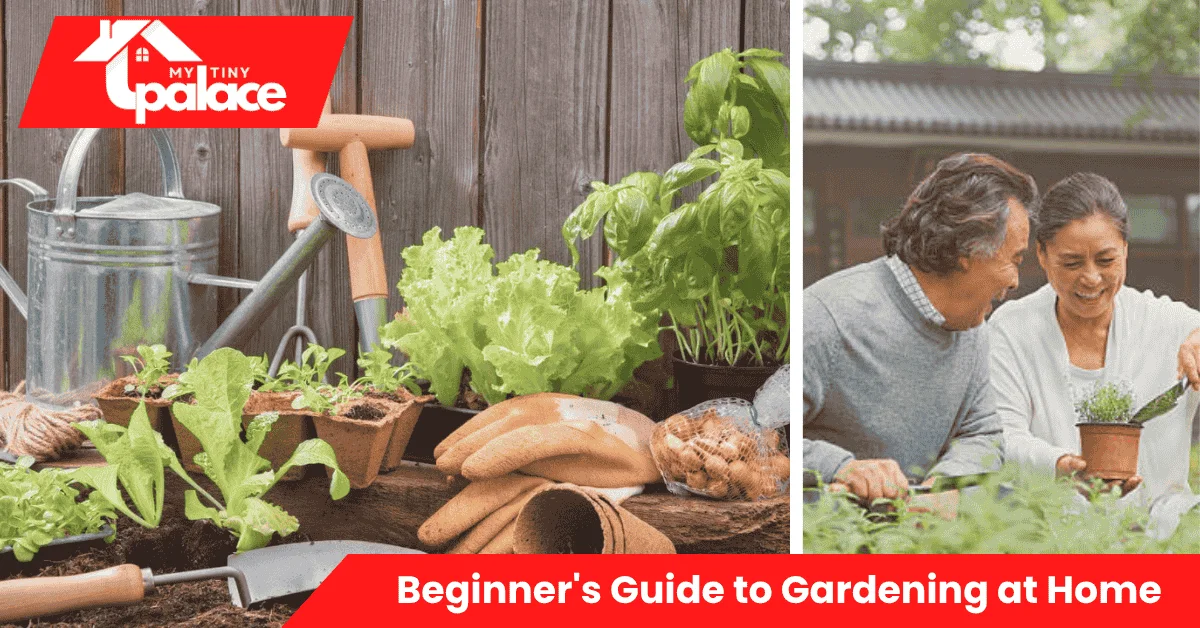
Step-by-Step: Start Your First Garden
Pick a location first. For outdoor spaces, find a spot that gets the right amount of sun for your chosen plants. Test drainage by pouring water on the ground—if it pools, you need containers or raised beds. For indoor setups, place pots near your brightest window and rotate them weekly.
Choose containers next. Use pots with drainage holes at the bottom to prevent root rot. A 10-litre pot works for herbs, while a 15–20 litre container fits one tomato plant or several lettuce plants. Avoid garden soil—it compacts in pots and drowns roots. Buy bagged potting mix instead, which drains well and contains nutrients.
Plant your seedlings during the appropriate season. Spring and early summer are safest for beginners because most plants thrive in warm weather. Dig a hole in the potting mix deep enough to cover the root ball, place the seedling inside, and gently press soil around the base. Water immediately after planting to settle the roots.
Water consistently for the first two weeks. Check soil moisture by sticking your finger two inches deep—if it feels dry, water until liquid drips from the drainage holes. Most beginner plants need watering every two to three days outdoors and once a week indoors. Avoid daily watering, which causes root rot.
Add a slow-release fertilizer pellet or liquid feed once a month. Potting mix loses nutrients over time, so plants need supplemental feeding. Follow package instructions carefully—over-fertilizing burns roots and yellows leaves.
Materials You Need (Quick List)
You’ll need potting mix (not garden soil), containers with drainage holes, a small watering can or spray bottle, plant labels, and a hand trowel. Budget around $30–$50 for your first setup if you buy three plants and the necessary supplies. You can skip fancy tools initially—a spoon works as a trowel, and masking tape works for labels.
3 Simple Starter Plans (Balcony, 6-Pot Herb Box, Windowsill Salad)
Balcony plan: Buy three 15-litre pots, fill them with potting mix, and plant one cherry tomato, one basil, and one mint. Water every two days and harvest basil leaves as they grow. By week four, you’ll have fresh herbs and small tomatoes starting to form.
6-pot herb box: Arrange six small pots (6–8 litres each) on a shelf or table. Plant basil, parsley, cilantro, chives, mint, and oregano. Water once a week indoors, twice outdoors. Snip leaves as needed. This setup provides continuous fresh herbs for cooking.
Windowsill salad: Use three shallow containers (8–10 litres) and plant mixed lettuce, arugula, and spinach. Place on a south-facing windowsill and rotate daily. Water lightly every three days. Harvest outer leaves after three weeks, leaving the center to regrow.
Costs, Time, Tools — Include a Small Table
| Item | Typical Cost | Time Per Week |
|---|---|---|
| 3 containers (10–15L) | $15–$25 | — |
| Potting mix (20L bag) | $8–$12 | — |
| 3 seedlings | $9–$15 | — |
| Watering can | $5–$10 | 10–15 minutes |
| Hand trowel | $3–$8 | — |
| Fertilizer (small bottle) | $6–$10 | 5 minutes/month |
Your total startup cost runs between $40 and $70. Weekly maintenance takes 15–20 minutes once plants are established. You’ll water, check for pests, and harvest ready leaves. Nice-to-have items like grow lights or automatic watering systems can wait until you decide gardening is a long-term hobby.
Common Problems and Simple Fixes
Overwatering is the most common beginner mistake. Leaves turn yellow and stems rot. Fix it by reducing watering frequency and ensuring containers drain properly.
Pests like aphids cluster on new growth. Spray them off with water or use a diluted soap solution (one teaspoon dish soap per liter of water). Remove heavily infested leaves.
Leggy seedlings stretch toward light and grow tall and weak. Move pots closer to a window or add a grow light. Pinch back the tops to encourage bushier growth.
Wilting happens when the soil dries out completely. Water immediately and mulch the soil surface with small stones or bark to retain moisture.
Yellow leaves signal too much water, too little light, or nutrient deficiency. Check soil moisture, move the pot to a brighter spot, and add fertilizer if it’s been over a month since the last feeding.
Slow growth in the first two weeks is normal—roots are establishing. If growth stays slow after a month, check that the pot isn’t root-bound and the plant gets enough light.
Pros & Cons / Who Should Consider It
Home gardening suits people who want fresh food, enjoy hands-on projects, and have at least 15 minutes a week for maintenance. It works well for renters because containers are portable and don’t require yard modifications. Families benefit by teaching kids about food and responsibility. Homebodies and remote workers appreciate the stress relief and the satisfaction of watching plants grow.
Avoid gardening if you travel frequently for weeks at a time without someone to water your plants. It’s also not ideal if you live in a dark apartment with no direct sunlight and can’t invest in grow lights. Frequent movers might find containers cumbersome, though lightweight plastic pots make relocation easier.
Pros: Fresh, affordable food; improved mood; portable setups; low initial cost; beginner-friendly plants available.
Cons: Requires consistent watering; needs adequate light; pests occasionally appear; limited yields in small spaces.
Quick Summary + CTA (What to Do Next)
You can grow fresh herbs, salad greens, or small vegetables at home with minimal space, time, and money. Pick one of the three starter plans from this guide—balcony, 6-pot herb box, or windowsill salad—and buy the basic supplies listed in the costs table. Start this weekend by planting three beginner-friendly seedlings and watering them every two to three days. Track your progress over 30 days and note what works. Once you see your first harvest, you’ll know whether to expand or keep your setup simple. Try the windowsill salad plan this weekend and taste fresh greens in three weeks.






